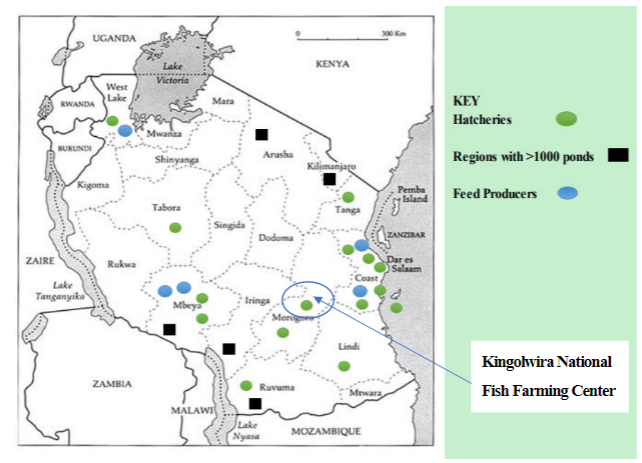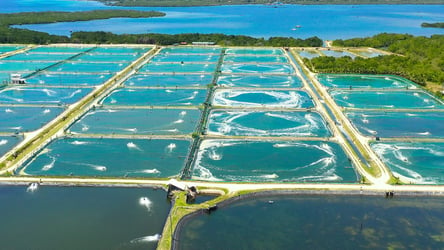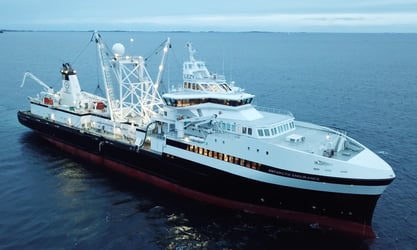Freshwater aquaculture is gradually becoming common practice in sub-Saharan Africa. Rural farmers raise fish in ponds for subsistence, to boost their family’s protein intake, and to earn supplemental income to help pay to send their children to school. Cyanobacterial harmful algal blooms (CyanoHABs) in these ponds, and in general, are starting to gain attention in Africa, as they can impact livestock and human health.
| ‘’FlowCam is a fascinating instrument in our cyanobacteria studies, and we see new and exciting images’’. - Jabulani Gumbo, PhD |
Two recently-published papers co-authored by Dr. Offoro N. Kimambo and Dr. Jabulani Gumbo use FlowCam to study harmful algae throughout the region. FlowCam studies can help scientists understand how the ecology of the ponds is affected by physio-chemical conditions.
The first of these papers, published in the International Journal of Environment by Kimambo, Gumbo, et al. (2020) is titled The Unusual Reddish-Bloom Appearance in a Freshwater Fishpond at Kingolwira National Fish Farming Center, Morogoro, Tanzania1. The purpose of the study was to discover the cause of the reddish-bloom appearance of the fish pond in September 2018. The study location and surrounding aquaculture locations are pictured above.
FlowCam was used to analyze samples from the ponds and found that Microcystis was dominant in the green fishpond (A) whereas Euglenophytes was more common in the reddish fishpond (B). Statistics were used to confirm the differences.

Kimambo et al. tell us, "Cyanobacteria vary in colour from blue-green, grey-green, violet, brown, purplish to red when examined under the microscope ... The field images [pictured above] show a visible mixture of both green and reddish blooming. During sampling ... the bloom was smelling earthy/musty, which is sometimes associated with nuisance algal blooms".
The FlowCam images below show a sampling of species found in the ponds. (Left) Species found at the green blooming pond: (A, B, C) Micocystis and (D) a filamentous species of Nodularia. (Right) Species found at the reddish blooming pond: (A) Phacus limnophilus - a member of the Euglena genus (B, C) Haematococcus, and (D) Microcystis.
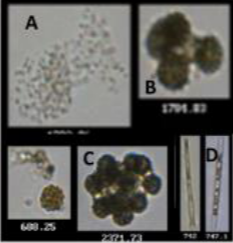
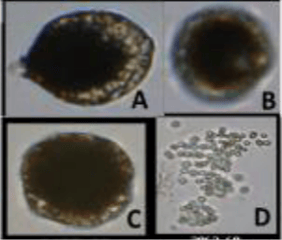
The researchers conclude that "[Microcystis and Euglenophytes] have the potential to produce secondary metabolites (toxins) or to produce a hypoxia condition that is harmful to the fishery, aquatic ecology, and [humans]. To confirm toxicity nature and dynamics further, future studies should consider extensive and regular diurnal and long-term monitoring."
The authors published a new paper this year titled, Harmful Algae in Aquaculture Systems in Ngerengere Catchment, Morogoro, Tanzania2, where they used FlowCam to identify cyanobacteria in water samples from reservoirs and fishponds collected quarterly between October 2017 and September 2018. Principal component analysis (PCA) was also employed to examine the association between physio-chemical variables and meteorological patterns.
In this map published in Kimambo et al.'s most recent paper, the upper left shows Tanzania and the enlarged section shows the Ngerengere Catchment sample locations (SP01-SP06), mostly downstream of the Mindu Dam.
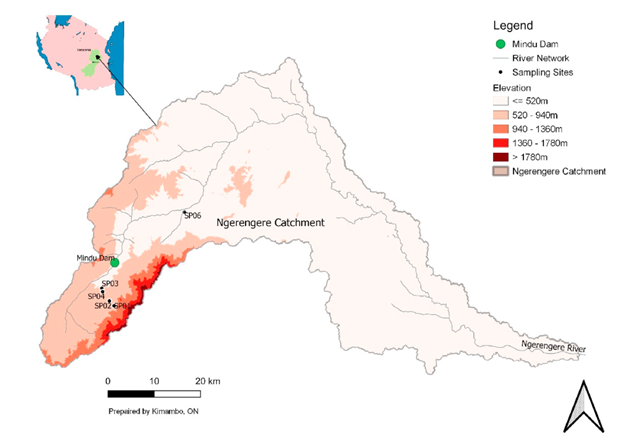
Cyanobacteria including Microcystis, Anabaena (Dolichospermum), Cylindrospermopsis, Aphanizomenon, and Lyngbya, in addition to diatoms and Euglena, were identified throughout the study.
The paper's abstract states, "heavy rainfall and prolonged dry conditions influenced cyanobacteria bloom dynamics. The hydrological connectivity between the fishponds and the Mindu Dam poses a threat to public health because a significant population in Morogoro depends on [the] Mindu Dam for domestic water supply. There is a need for the development of a framework for mitigative and adaptive measures in the catchment, especially during pre-and post-occurrence of blooms."
References:
1. N. Kimambo, O., R. Gumbo, J., A.M Msagati, T., & Chikoore, H. The Unusual Reddish-Bloom Appearance in a Freshwater Fishpond at Kingolwira National Fish Farming Center, Morogoro, Tanzania. (2020) International Journal of Environment, 9(2), 204–216. https://doi.org/10.3126/ije.v9i2.32734
2. Offoro N. Kimambo, Jabulani R. Gumbo, Titus A.M. Msagati, Hector Chikoore (2022) Harmful algae in aquaculture systems in Ngerengere Catchment, Morogoro, Tanzania: Descriptive community structure and environmental concerns, Physics and Chemistry of the Earth, Parts A/B/C, 125, https://doi.org/10.1016/j.pce.2021.103103.








